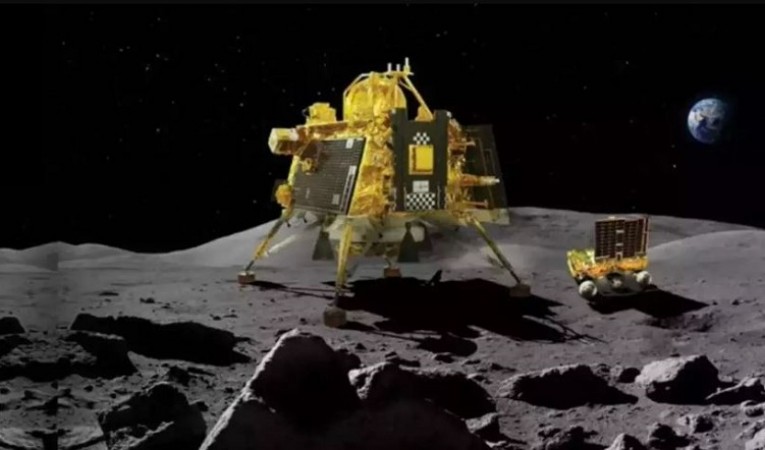
A New Dawn on the Moon: Chandrayaan 3's Hopeful Resurgence: As the sun gracefully ascends above the horizon at Shiv Shakti Point, a sense of anticipation fills the hearts of ISRO scientists, the people of India, and well-wishers worldwide. Their collective gaze now turns toward the lunar surface, where the fate of Chandrayaan 3's Vikram Lander and Pragyan Rover hangs in the balance. Will these intrepid explorers of the Moon spring back to life following the frigid and unforgiving lunar night? It is a momentous question, for should they awaken, the Chandrayaan 3 mission will extend its quest to unravel the mysteries of the Moon for yet another lunar day, a period spanning a fortnight in Earth's reckoning.
The lunar sunrise, a celestial spectacle witnessed in shifting phases from our terrestrial vantage, serves as a cosmic clock for this lunar drama. Each lunar day and night lasts approximately 14 Earth days, their demarcation etched by the terminator line, the celestial border between light and shadow. This line has now traversed Shiv Shakti Sthal, a hallowed ground on the southern fringe of the Moon, close to the Manzinus crater. It was here, on August 23, 2023, that Chandrayaan 3 etched history by achieving ISRO's inaugural soft and controlled landing on an extraterrestrial surface.
In the lunar expanse, where no power outlets exist, solar panels emerge as the sole lifeline for the Lander and Rover to generate their essential electricity. Sunlight, therefore, becomes the vital elixir that sustains their scientific pursuits. However, mere sunlight is not the sole criterion for their continued functionality. Conversations with members of the Chandrayaan 3 team, as reported by Chethan Kumar for the Times of India, reveal that an optimal solar elevation angle, ideally ranging from 6° to 9°, must be achieved for the hardware to operate optimally. Simultaneously, the lunar temperatures must ascend to levels conducive for these resilient machines to function.
The lunar environment, a harsh realm, witnesses temperature fluctuations of extreme magnitude, plummeting to as low as -180°C during the inky lunar nights and soaring to a blistering 120°C in the relentless lunar daytime. The sensitive scientific instruments on board the Lander and Rover were not originally designed to withstand these drastic thermal oscillations. Nevertheless, ground tests suggest a faint glimmer of hope, a slim possibility that, when bathed in lunar sunlight, these intrepid machines might revive and recommence their scientific endeavors. In this moment, all we can do is wait with bated breath, buoyed by hope, as we yearn for the resumption of scientific exploration upon the lunar canvas.
The original mission envisioned a single lunar day for the Chandrayaan 3 expedition, with all scientific instruments performing in accordance with expectations. This period was intended to yield invaluable data that would illuminate the path for future lunar missions. ISRO, in its spirit of global scientific cooperation, pledges to freely share this treasure trove of data with the worldwide scientific community, aligning with past practices for missions exploring the realms of the Moon and Mars. The forthcoming years are sure to witness an array of scientific papers and discoveries borne of meticulous analysis of this rich dataset, ushering humanity deeper into the cosmic enigma that is our celestial neighbor, the Moon.